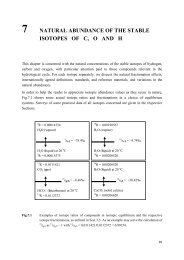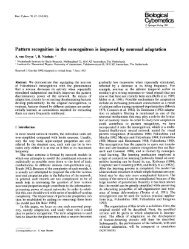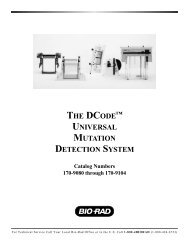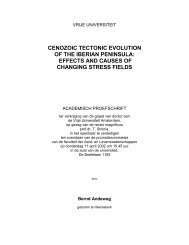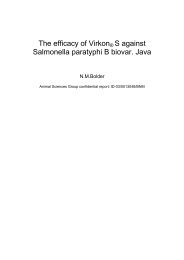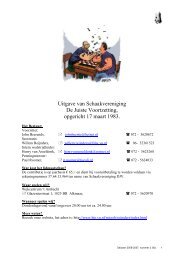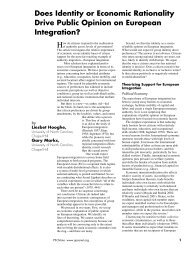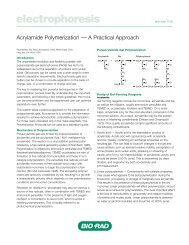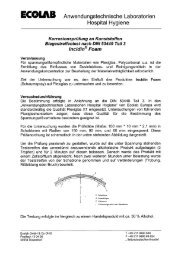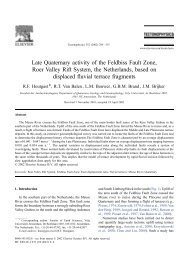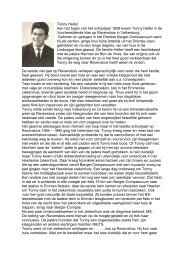DON'T PANIC - falw.vu
DON'T PANIC - falw.vu
DON'T PANIC - falw.vu
You also want an ePaper? Increase the reach of your titles
YUMPU automatically turns print PDFs into web optimized ePapers that Google loves.
A GUIDE TO DGGE (V2) Page 12<br />
Nested PCR<br />
Nested PCR is a technique by which genomic DNA is subject to PCR amplification and then the<br />
product resulting from the amplification is subject to a second, nested PCR with primers that<br />
target a region within the region targeted by the first PCR primers. There are a number of reasons<br />
to employ nested PCR:<br />
• Increase PCR yield from weak reactions<br />
• Avoid detrimental effects of PCR amplification with primers that have a GC-clamp<br />
• Generate specific DNA fragments suitable for DGGE analysis from DNA fragments that are<br />
not suitable for DGGE analysis<br />
• Allow direct DGGE comparisons of general and specific population analyses<br />
• Recover additional sequence information than that provided in DGGE-appropriate<br />
fragments.<br />
• Avoid having to develop and optimize new DGGE conditions for a new primer set.<br />
• Compare the community recovered by different primer sets (for example - PCR large<br />
fragments with different general bacterial primer sets and then nest with the same general<br />
bacterial primer sets and compare by DGGE. This is limited by the internal primer set, but it<br />
can still reveal important differences in primer sets.)<br />
I have added a small flow chart below to show some of the potential. I think that in particular,<br />
the capacity to generate sequence information that is larger than the DGGE fragment is<br />
underutilized.<br />
There are some caveats related to nested PCR. Namely, since there are multiple PCR reactions<br />
and high numbers of PCR cycles, the potential for chimera formation and sequence errors<br />
increase. Also, you will find that nested PCR can often generate secondary, non-specific bands.<br />
You should optimize PCR conditions (temp, cycle #, magnesium concentration) to reduce the<br />
intensity of these bands, if possible. All things being equal, if you can achieve your aims without<br />
nested PCR, you probably should avoid it. However, for some things, the nested PCR approach<br />
is so useful, it’s worth it. If you are worried about the quality of sequences recovered from nested<br />
PCR, you can apply specific primers (developed based on the sequence information recovered<br />
from the nested PCR approach) to the same samples to demonstrate that the sequences are<br />
actually present.<br />
When I conduct nested PCR, I usually dilute the original PCR product 1:5 or 1:10. I do not<br />
perform a cleanup prior to the second stage of PCR. However, I generally raise the annealing<br />
temperature of the second stage of PCR by 4C relative to the standard temperature for the given<br />
primer set (this will also help avoid contamination of the blank, by the way…), and I perform<br />
fewer cycles and often I add less primers. These are all attempts to limit the efficiency of the<br />
PCR reaction so as to not get too many secondary, non-specific bands.<br />
Stefan J. Green Stefan@stefangreen.com



